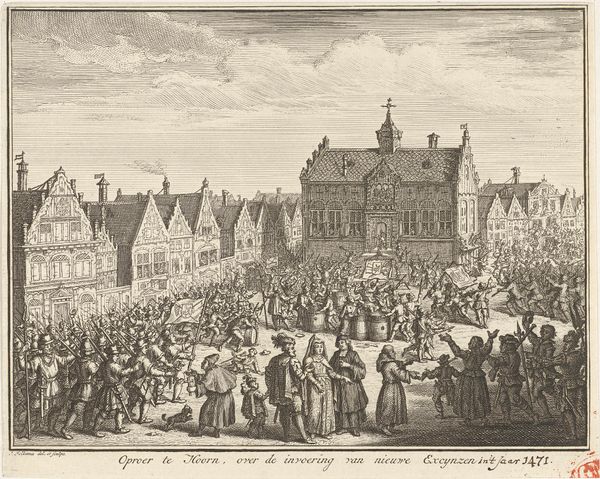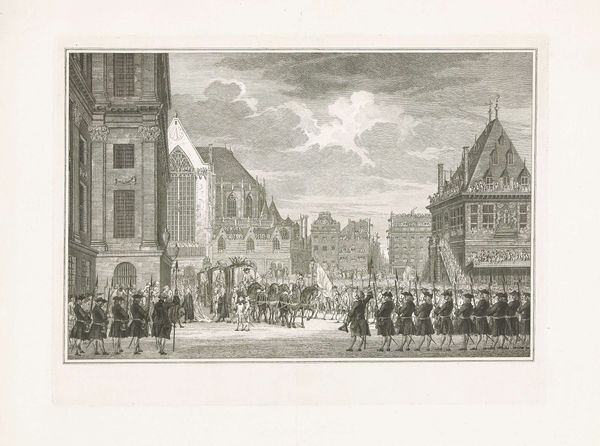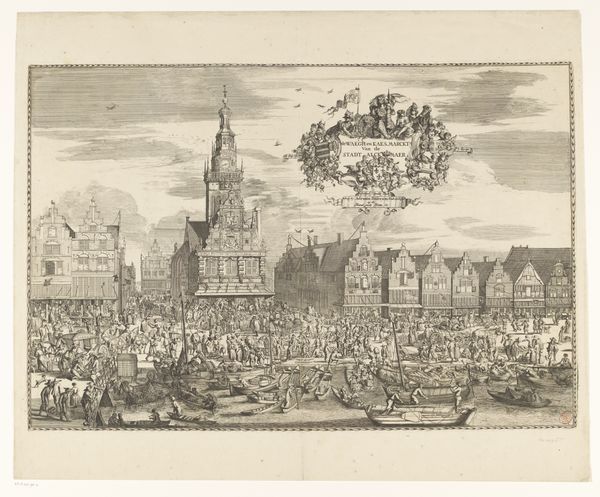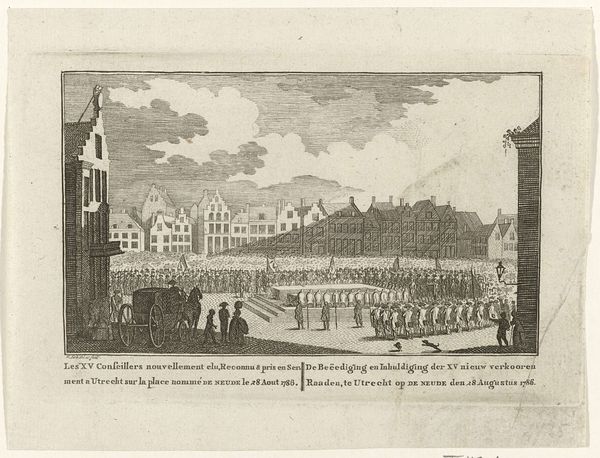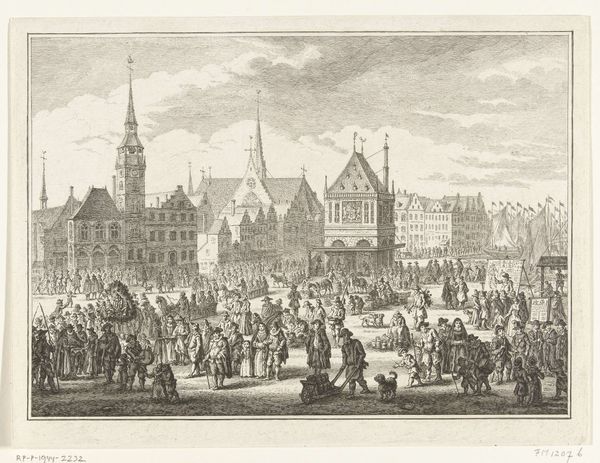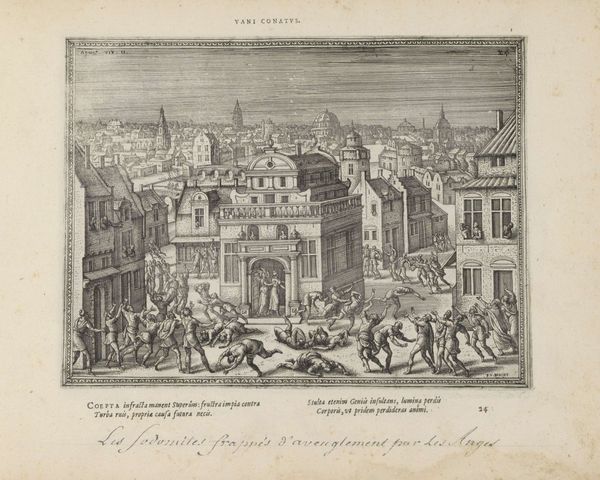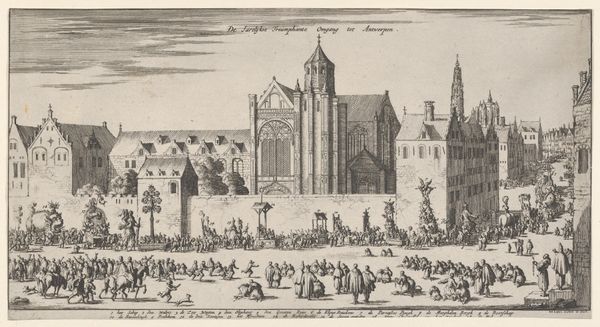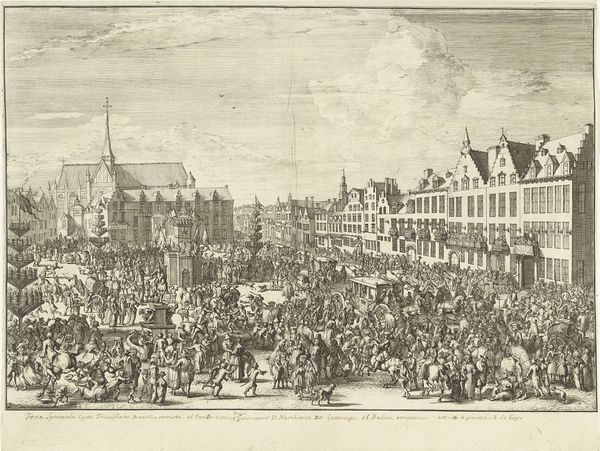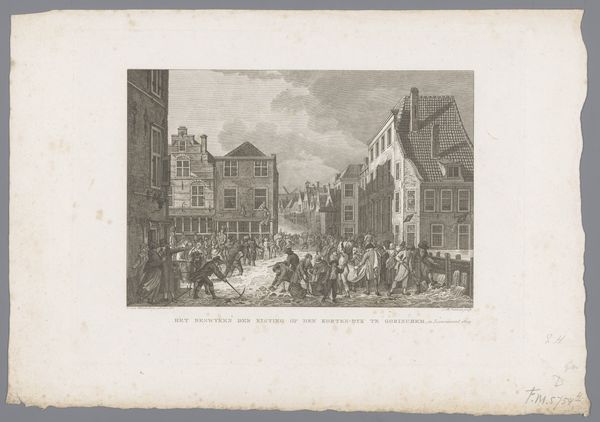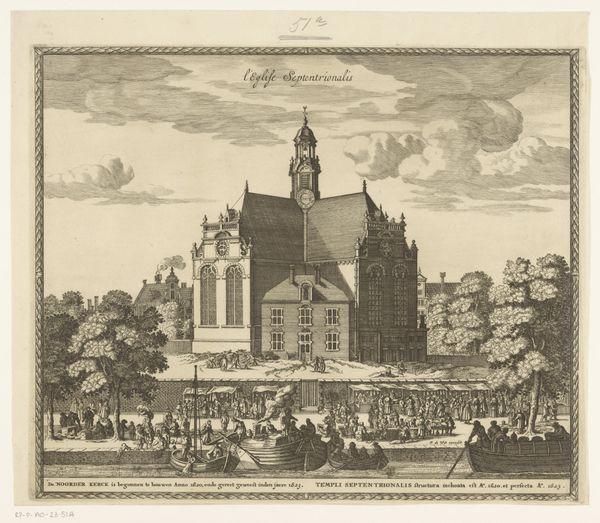
print, engraving
#
narrative-art
#
baroque
# print
#
old engraving style
#
figuration
#
cityscape
#
history-painting
#
engraving
Dimensions: height 186 mm, width 217 mm
Copyright: Rijks Museum: Open Domain
Curator: Ah, here we have Noach van der Meer the Younger’s “The Betrayal of the Count of Rennenberg, 1580,” an engraving from 1752, part of the Rijksmuseum's collection. Editor: What a flurry of action! My first thought is a scene of controlled chaos. The building dominates, but it’s almost overwhelmed by the surging figures. It's… theatrical, somehow. Curator: Precisely. Note the meticulous detail of the architectural structure and the figures in the foreground. Van der Meer is clearly concerned with perspective. See how it all directs your gaze into the city in the background? Editor: Absolutely. It’s all lines and angles. It draws you in but there's a coolness to it all, don't you think? I almost feel distant from the emotional core. There's drama in the *idea* of betrayal, of course, but where's the heart of it? Curator: True, but consider the context. This is baroque; it is, in essence, designed to awe and instruct, not necessarily to evoke deep empathy. Van der Meer presents Rennenberg's act as a turning point in Dutch history, etching into collective memory a potent narrative. Editor: So, more political than emotional. And that formality in style reinforces it. I get it—it's not supposed to be a tear-jerker; it’s a historical marker, plain as day! Still, I wish there were some suggestion of the inner turmoil involved in such a profound shift. A single mournful face would have transformed this engraving, maybe. Curator: An interesting point. Yet, its power lies in its composition and line. The crisp detail immortalizes a moment of national reckoning. Van der Meer invites us to dissect, not simply to feel. Editor: Well, I guess I can appreciate the technique, if not the emotional reserve! I still find myself strangely unmoved. Curator: Art elicits diverse reactions, and that is one thing that keeps the conversation alive. This detailed account, rendered through skillful handiwork, continues to invite us to examine critical points in history. Editor: Perhaps it is like history itself then; it tells us what happened, but we are left to imagine the human stories. Thanks for illuminating all those important details for me.
Comments
No comments
Be the first to comment and join the conversation on the ultimate creative platform.


